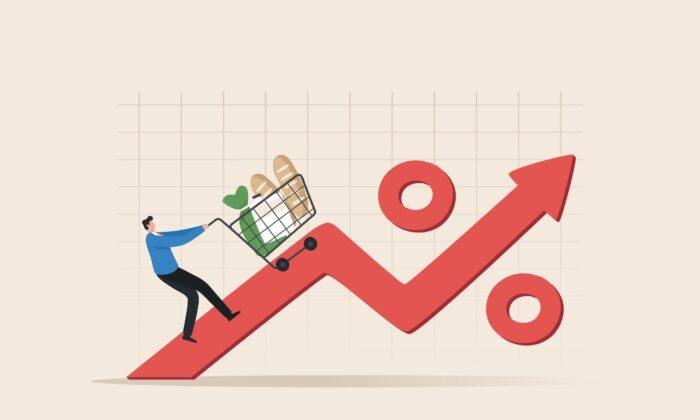| Fed Meeting | Rate Increase | Target Rate |
| March 15–16, 2022 | +25 basis points | 0.25–0.5 percent |
| May 3–4, 2022 | +50 basis points | 0.75–1.0 percent |
| June 14–15, 2022 | +75 basis points | 1.50–1.75 percent |
| July 26–27, 2022 | +75 basis points | 2.25–2.5 percent |
| Sept. 20–21, 2022 | +75 basis points | 3.0–3.25 percent |
| Nov. 1–2, 2022 | +75 basis points | 3.75–4.0 percent |
| Dec. 13–14, 2022 | +50 basis points | 4.25–4.5 percent |
| Jan. 31–Feb. 1, 2023 | +25 basis points | 4.5–4.75 percent |
| March 21–22, 2023 | +25 basis points | 4.75–5.0 percent |
| May 2–3, 2023 | +25 basis points | 5.0–5.25 percent |
So, why pause rates? Well, there could be a few reasons.
First, the next Fed meeting with the Fed’s Summary of Economic Projections (SEP), otherwise known as the “dot plots,” isn’t until Sept. 19, so the Fed will have economic data from June, July, August, and part of September to assess the state of the economy. (There is a July meeting, but without the dot plots.) Fed chair Jerome Powell mentioned the lengthy gap in his press conference last week. The “wait and see” approach will allow the Fed to fine-tune its September projections and set longer-term policy. But Powell also said a rate increase could come in July.
“I think [the pause] allows the economy a little more time to adapt as we make our decisions going forward and we‘ll get to see, you know, we haven’t really—we don’t know—the full extent of of the consequences of the banking turmoil that we’ve seen. It would be early to see those, but we don’t know what the extent is. We’ll have some more time to see that unfold.”There are also a variety of extraneous issues that the Fed could expect to slow the economy without tighter Fed policy, although they may also be inflationary. The I-95 collapse near Philadelphia, for example, will reduce productivity because of longer commuter times. But it will also likely exacerbate transportation costs. Likewise, the pending possible UPS strike will slow the delivery of goods to consumers, but it is also likely to raise delivery costs and prices and to slow the supply chain, especially for small retailers and manufacturers who do not have their own transportation infrastructure. Finally, even China’s official GDP—always more an illusory display of sycophantic Chinese Communist Party propaganda than a reliable data point—showed first-quarter 2023 growth of just 4.5 percent growth (meaning the actual number is likely less, by anywhere from 50 to 200 basis points.) But even the “official” number is low for China relative to the pre-pandemic years.
The donor class—the lobbyists who bundle donations on behalf of wealthy business interests and that tend to fund most campaigns —and their clientele tend to be the most immune from the effects of inflation because they own assets and set market prices. They can thus endure a longer tail to inflation, particularly if it plays to their longer-term political interests. So it’s entirely reasonable to be circumspect about attempts to disabuse public opinion of the virtue of the long-standing 2 percent inflation target. Multiple publications, particularly those leaning to the left,—rom blogs to The New York Times—assert that the 2 percent inflation target is “arbitrary.” It is, but monetary policy should not be mercurial, particularly to serve private or political interests.
Summary
The Fed has maintained an informal 2 percent inflation rate since 2009, up from a 1.5 percent rate starting in 2000. The Fed formally apdopted a 2 percent target rate in January 2012. Entire retirement plans, annuities, contracts, and financial instruments have been entered into assuming a 2 percent inflation target was sacrosanct. Were the Fed to abandon that now deeply ingrained target, it would grievously injure the retirement plans, college savings accounts, and financial prospects that Americans have been making for nearly a quarter century.The Fed needs to keeps its eye on the ball and ignore the noise from the chattering classes, maintain a 2 percent target inflation rate, and aggressively pursue it until it is achieved. If ever there is to be an increase in the 2 percent target rate of inflation, it shold be part of the debate in a presidential election year, where it can be debated, not dictated. Any change should take effect gradually, over several years. But as was once related, “A little inflation is like a little pregnancy. Once it’s there, it tends to grow.”





